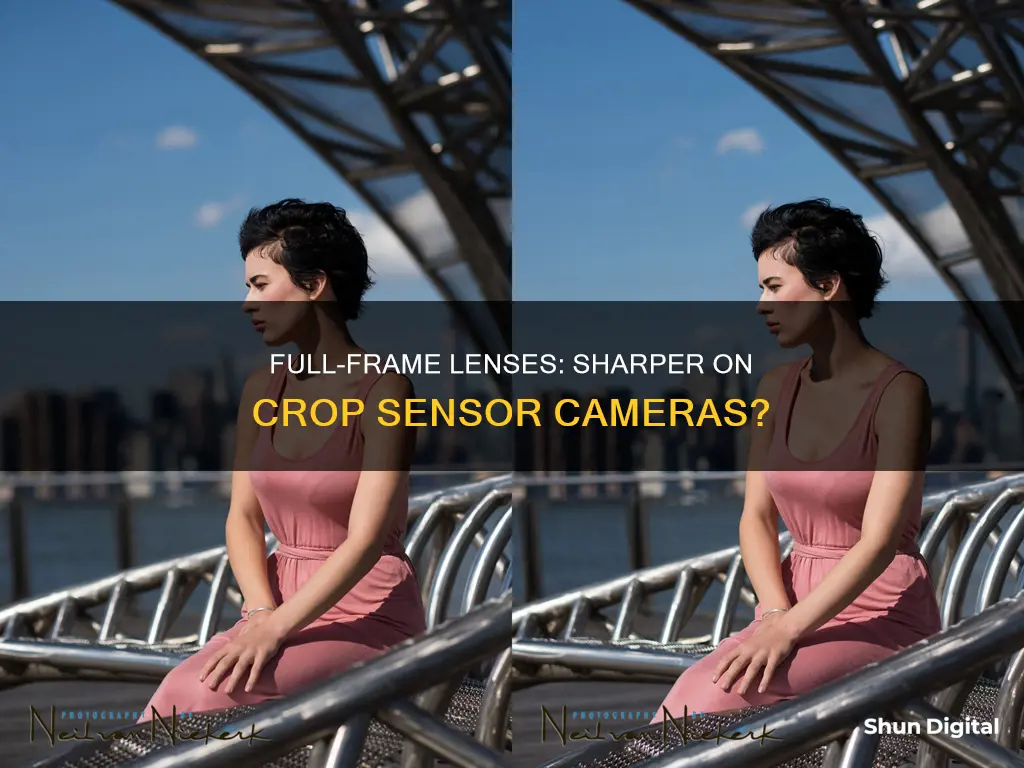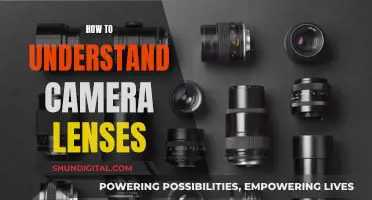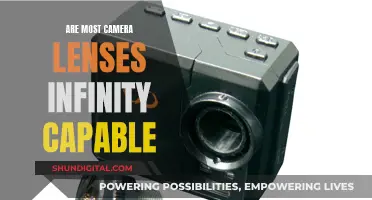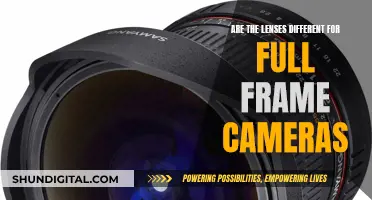
The sensor size of a camera is one of the most important factors to consider when purchasing a camera. The two most popular sensor sizes are cropped and full-frame. The sensor is the physical rectangle in the centre of your DSLR camera that reads the image from the lens. The larger the sensor, the more light and detail you can capture, resulting in higher image quality. Full-frame sensors are generally 35mm in size, whereas crop sensors are smaller, resulting in a tighter field of view.
When it comes to lenses, full-frame lenses can be used on crop sensor cameras and will produce the same image as a crop sensor lens at the same focal length, aperture, and lighting. However, full-frame lenses tend to be bulkier and more expensive. On the other hand, crop sensor lenses typically cannot be used on full-frame cameras as they are designed to let in less light, which can cause distortions on the image.
In terms of image sharpness, it is not solely dependent on the sensor size but also on the lens quality. Full-frame cameras have an advantage in low-light conditions due to their larger sensors, resulting in sharper and clearer images with less noise and more detail. However, in good lighting conditions, the image quality between full-frame and crop sensor cameras is comparable, and the skill of the photographer plays a more significant role.
Ultimately, the decision between a full-frame and crop sensor camera depends on your photography goals, budget, and specific needs. Both systems can produce excellent images, and advancements in camera technology continue to narrow the quality gap between the two options.
| Characteristics | Values |
|---|---|
| Image quality | Full-frame and crop sensor cameras are capable of producing excellent images, depending on the skill of the photographer. |
| Sensor size | Full-frame sensors share the same dimensions of 35mm film (24 x 36mm). |
| Crop sensor size | Anything smaller than 35mm, such as APS-C and Micro 4/3. |
| Low-light performance | Full-frame cameras perform better in low-light conditions due to their larger sensor size and pixels. |
| Dynamic range | Full-frame cameras offer a higher dynamic range, resulting in higher contrast images and better recovery of underexposed or overexposed images. |
| High ISO performance | Full-frame cameras have improved high ISO performance with less digital noise. |
| Depth of field | Full-frame sensors allow for a shallower depth of field, creating a more blurred background effect. |
| Resolution and detail | Full-frame sensors provide higher resolution and more detail, making them ideal for commercial photography and large-format printing. |
| Field of view | Full-frame sensors offer a wider field of view, making them suitable for landscape, real estate, and architecture photography. |
| Price | Full-frame cameras and lenses tend to be more expensive than their crop sensor counterparts. |
| Portability | Crop sensor cameras and lenses are smaller and more compact, making them ideal for travel and street photography. |
| Frame rate | Crop sensor cameras often have a faster frame rate in burst mode due to smaller image sizes. |
| Lens compatibility | Full-frame lenses can be used on crop sensor cameras, but crop sensor lenses may not be compatible with full-frame cameras due to insufficient light coverage. |
What You'll Learn

Full-frame lenses can be used on crop sensor cameras
Another benefit of using full-frame lenses on a crop sensor camera is cost-effectiveness. Crop sensor camera bodies and lenses are generally more affordable than their full-frame counterparts. By investing in a full-frame lens, you can use it on both your crop sensor camera and a full-frame camera if you choose to upgrade in the future. This can save you money in the long run, as you won't need to replace your lenses when switching to a full-frame system.
Additionally, full-frame lenses tend to hold their value better than camera bodies. This means that if you decide to sell your gear in the future, you may get a better return on your investment. It's worth noting that full-frame lenses will likely be larger and heavier than their crop sensor equivalents, which may be a consideration when choosing your setup.
When it comes to image quality, full-frame lenses on crop sensor cameras may not provide a significant advantage in good lighting conditions. In low-light scenarios, however, the larger size and higher pixel count of full-frame sensors can result in improved image quality, with higher dynamic range and less noise. This is especially noticeable at higher ISO settings, where full-frame sensors excel due to their larger photosites, capturing more light with less noise.
Understanding Camera Lens Interchangeability: What You Need to Know
You may want to see also

Full-frame lenses are often bulkier and more expensive
Firstly, the larger sensor requires a wider angle of view, which means that full-frame lenses need to be larger in order to capture the same amount of light and detail as a crop sensor lens. This increased size can make full-frame lenses bulkier and more difficult to carry around, especially for travel, street, or photojournalism purposes.
Secondly, the larger sensor size of a full-frame camera allows for a shallower depth of field, which can be useful for certain types of photography such as portraiture, food photography, and commercial photography. To take advantage of this shallower depth of field, full-frame lenses often have a larger maximum aperture, which requires additional glass elements and increases the size and weight of the lens.
In addition to the size and weight differences, full-frame lenses also tend to be more expensive than their crop sensor counterparts. This is because the manufacturing cost of a full-frame sensor can be up to twenty times that of a crop sensor. This increased cost is reflected in the retail prices of both the camera body and the lenses.
While full-frame lenses offer certain advantages in terms of image quality and flexibility, it is important to consider the trade-offs in terms of size, weight, and cost. For photographers who prioritize portability and affordability, a crop sensor setup may be a more suitable option. Ultimately, the decision between a full-frame and crop sensor system depends on the specific needs and goals of the photographer.
The Myth of Circular Camera Lenses: Fact or Fiction?
You may want to see also

Crop factor only comes into play when comparing camera bodies
The crop factor is a term often heard in digital photography, especially when discussing entry-level cameras. It is the ratio of the 35mm full-frame diagonal to the diagonal of a smaller crop sensor. The 35mm film became the dominant still photography film format in the photo industry in the mid-to-late 1900s and continues to be the most widely used format among analog photographers.
When the film era transitioned into the digital photography era, the standard 35mm frame size became known as "full-frame" and this is the reference point by which the "crop factor" of "crop sensors" is discussed. The size of the image sensor in a "full-frame" digital camera is the same as a frame of 35mm film.
The crop factor doesn't affect a lens's focal length or its speed, based on the size of the lens aperture. It allows photographers to understand what the 35mm equivalent is as a baseline or base reference for comparing various lenses.
Different camera bodies have different crop factors. For example, Canon has a 1.6x crop sensor, while Nikon, Sony, Sigma, and Pentax have a multiplier of 1.5x, and Panasonic and Olympus are 2x.
The crop factor only comes into play when comparing camera bodies. If you have a full-frame camera, the subject of crop factor may not matter to you in your photography. But if you change lenses and move from one camera body to another, then understanding the interplay of crop factors can make a photographer's life easier.
For example, if you have a zoom lens on a smaller-than-full-frame camera, you can figure out the effective focal-length equivalent by multiplying both focal length numbers by the crop factor. So, a 70-200mm lens becomes a virtual 105-300mm lens on a 1.5x APS-C sensor.
Cameras with sensors or films larger than a 35mm frame will have sub-one crop factors. For instance, a medium-format Pentax 645Z’s sensor measures 33 x 44mm, giving it a crop factor of 0.78x. A 50mm lens on this Pentax camera gives an equivalent field of view of a 39mm lens.
Full-frame cameras are ideal for landscape images because there is no crop factor and wide-angle lenses maintain their wide-angle field of view. Smaller-sensor cameras give lenses a virtual telephoto effect that is ideal for some sports, wildlife, and macro work. Both formats have advantages and disadvantages.
Universal Camera Lenses: A Myth or Reality?
You may want to see also

Full-frame cameras have better low-light performance
Full-frame cameras have larger sensors, which can capture more light and information, resulting in higher-quality images. This is especially noticeable in low-light conditions, where full-frame cameras offer superior performance due to their larger pixels, which can capture more light with greater efficiency and less noise. This advantage is further enhanced by the higher ISO settings that full-frame sensors can deliver.
The larger sensor size of full-frame cameras also contributes to improved low-light performance by allowing for wider apertures. With a larger sensor, you can achieve the same depth of field as a crop sensor camera with a smaller aperture, resulting in a shallower depth of field and smoother background bokeh. This is particularly beneficial for portrait photography, where a blurred background can make the subject stand out.
The increased amount of light captured by full-frame sensors also results in improved dynamic range and colour depth. Full-frame sensors can record a wider tonal range within shadows and highlights, capturing more detail and colour at both ends of the spectrum. This is advantageous for shooting high-contrast scenes, as you can capture more detail in a single shot without needing to rely on HDR techniques or GND filters.
Additionally, the larger sensor size of full-frame cameras improves low-light performance by reducing the need to increase ISO settings. Higher ISO values often result in noisier images, but with full-frame sensors, you can achieve the desired exposure with lower ISO settings, resulting in cleaner images.
Camera Lenses: Scratch-Resistant or Not?
You may want to see also

Full-frame cameras have a shallower depth of field
Full-frame cameras have a larger sensor than their crop sensor counterparts. This larger sensor allows for a shallower depth of field, meaning that less of the image will be in focus. This is because a larger sensor requires a longer focal length to create the same field of view as a crop sensor camera.
The shallower depth of field can be advantageous for portrait photographers, as it can create a more visually appealing bokeh effect. It can also be beneficial for other types of photography that benefit from a blurred background, such as food photography.
However, there are situations where a shallower depth of field may be undesirable. For example, when photographing a group of people at different distances from the camera, it can be challenging to get everyone in focus. In such cases, a crop sensor camera with a deeper depth of field may be more suitable.
It's worth noting that the depth of field also depends on the lens and its maximum aperture, in addition to the distance between the photographer and the subject, and the distance between the subject and the background. While full-frame cameras offer a wider field of view, the shallower depth of field is a result of the photographer needing to get closer to the subject.
Ultimately, the decision between a full-frame and crop sensor camera depends on the specific needs and goals of the photographer. Both types of cameras have their advantages and can produce excellent images in the right hands.
How Camera Lenses Use Refraction to Capture Images
You may want to see also
Frequently asked questions
Full-frame lenses are not necessarily sharper on a crop sensor camera. Sharpness depends more on your lens quality and how it interacts with your camera than on sensor size alone.
Yes, you can use a full-frame lens on a crop sensor camera. The full-frame lens will take the exact same photo as a crop sensor lens as long as the focal length, aperture, lighting, etc. are all the same.
One pro is that you can benefit from the higher quality of full-frame lenses on a more affordable crop sensor camera. One con is that full-frame lenses are often bulkier and more expensive than crop sensor lenses. Additionally, full-frame lenses may be larger than what the crop sensor needs, resulting in a heavier setup.







